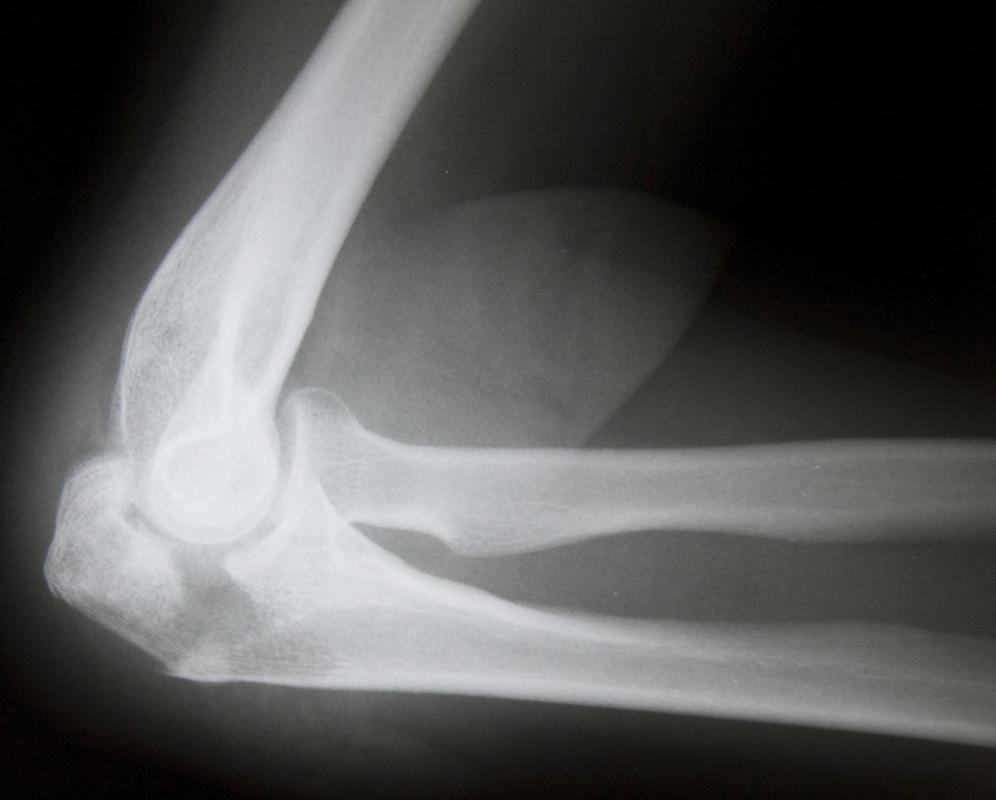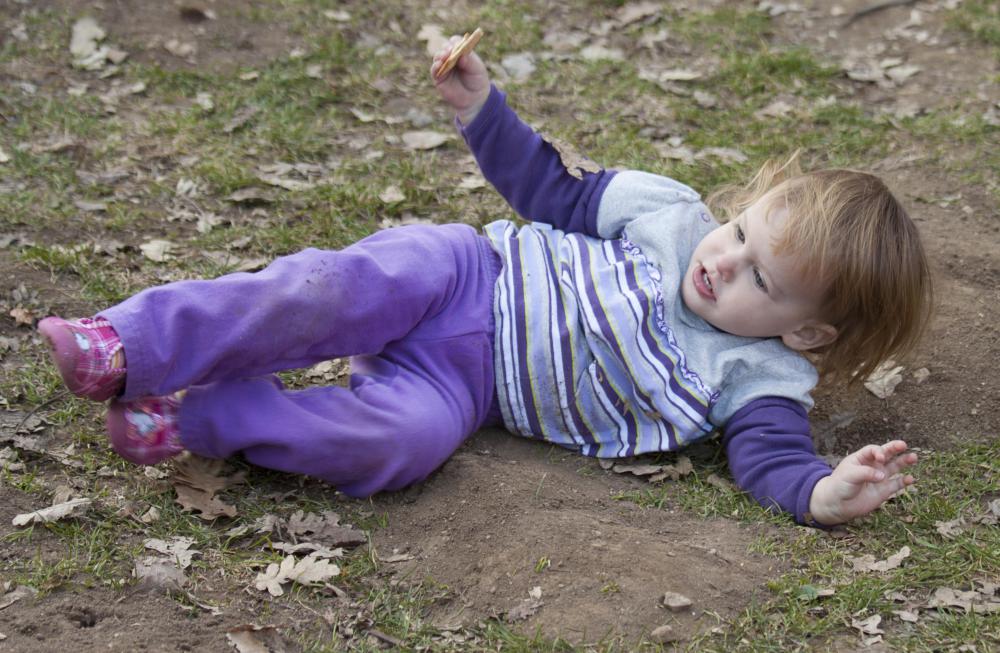At WiseGEEK, we're committed to delivering accurate, trustworthy information. Our expert-authored content is rigorously fact-checked and sourced from credible authorities. Discover how we uphold the highest standards in providing you with reliable knowledge.
What Is a Coronoid Fracture?
A coronoid fracture is a break in the coronoid process of the ulna, a small, triangular part of the bone that protrudes outward from the upper front part of the ulna. The ulna is the inner of the two long bones located in the forearm, on the opposite side of the thumb. Coronoid fractures rarely occur without some sort of other fracture to the ulna or dislocation of the elbow. Falls in which the arms are outstretched are the most common causes of coronoid fractures.
The coronoid process plays an important role in stabilizing the elbow. Several different arm ligaments attach to the coronoid, including the brachialis, the muscle in the upper arm that allows the elbow to flex. The collateral ligaments and several flexor tendons are also attached to the coronoid process. A coronoid fracture can decrease the stability of the elbow and make it difficult to move the forearm.

Symptoms of a coronoid fracture include pain and swelling in the elbow. Depending on the severity of the fracture, flexing and extending of the elbow may be difficult or impossible. Aside from an x-ray to determine the extent of the fracture, a complete neurovascular exam is required to measure the nerve function and blood flow of the area. A computerized axial tomography, or CT scan, may be performed to provide the treating physician with more anatomical detail regarding the fracture.

Treating a coronoid factor depends on the type and severity of the break. In cases where the fracture involves less than 50 percent of to coronoid process, the break can be treated without surgery. Early mobilization is typically preferred, with the patient regaining some range of motion within the first month after the break to prevent stiffness.
Coronoid fractures involving more than 50 percent of the process typically require surgery to repair the damage internally. In some cases, part of the radial bone’s head or olecranon—a body eminence behind the elbow—may be used to remodel the coronoid process. The surgeon may use metal screws to stabilize the elbow and help the coronoid process heal.

After treatment of a coronoid fracture, follow-up care focuses on both maintaining overall stability of the elbow and regaining range of motion. Throughout each stage of recover, x-rays are used to determine the effectiveness of the treatment and whether the bone is healing properly. Physical therapy may be required to help regain as much range of motion as possible.

Long-term complications include a decrease in the range of motion, osteoarthritis, and ongoing pain. Paresthesia, a sensation of numbness, tingle, or prickling in the skin, is also a possible long-term complication. Younger patients are at a lower risk for complications than older patients.
AS FEATURED ON:
AS FEATURED ON:















Discuss this Article
Post your comments